
How many black men have been killed by Toronto police? We can't know
Police civilian watchdog will not release data on the race of those killed by Toronto police — because it doesn't collect it. Neither does Stats Canada, the Office of the Independent Police Review Director or police themselves. The outcry began with the shooting of Andrew Loku, the South Sudanese man shot dead by police while wielding a hammer last month.
The anger mounted two weeks later, when the province’s police watchdog announced no charges would be laid against a Peel Region Police officer who shot and killed Jermaine Carby, a black man carrying a knife — despite "tampering” at the shooting scene by a fellow cop.
By the time demonstrators from Black Lives Matter TO blocked off the Allen Expressway in late July, another black man, Kwasi Skene-Peters, had been shot dead by Toronto police while wanted in connection with a recent double murder.
But as Toronto protesters join the list of communities rising up against police shootings of black men, there is a gaping hole in the intensifying debate: No figures exist to show how many black people have been shot and killed by Toronto police.
No race-based statistics on fatal police encounters are kept by province’s police watchdog — or Statistics Canada, Toronto police or the Ministry of Community Safety and Correctional Services. The lack of data is part of a Canadawide trend that researchers and activists have long decried as willful blindness.
"It’s remarkable in a country as developed as Canada, with as developed a criminal justice system and data collection on everything from carding to criminal record to number of tickets that you get, that you cannot find good information on police-related shootings — at all,” says Scot Wortley, a University of Toronto criminologist.
Last month, a coalition of black advocacy groups called for Toronto police to address the role race plays in fatal interactions, citing several cases of black men shot by police in recent years — including Michael Eligon, Reyal Jardine-Douglas, and O’Brien Christopher-Reid.
On the list of demands issued by the groups was that Ontario’s Special Investigations Unit, the civilian watchdog that has probed every fatal police shooting in Ontario since 1990, release anonymous but detailed data of its cases, including information about racial background.
"It’s absolutely critical for us to have this information, to address the problem of the overrepresentation of black people in these use-of-force incidents,” said Anthony Morgan, a lawyer with the African Canadian Legal Clinic.
"We can’t even get to solutions if we don’t have concrete numbers, because it ends up being a game of back-and-forth on the numbers,” he said.
The SIU, however, will not release data detailing the race of those killed by police, because it does not collect that information.
"We currently do not keep these types of statistics. Should race, mental health or other issues become relevant as a particular case proceeds, we would assess and investigate accordingly,” Monica Hudon, spokeswoman for the SIU, said in an email.
The Office of the Independent Police Review Director, which investigates complaints about police that do not involve serious injury or death, also does not keep race-based data. Statistics Canada’s Canadian Centre for Justice Statistics, meanwhile, only tracks fatal police shootings if an officer is criminally charged. Even then, it does not keep statistics on race.
The only statistics kept on police shootings by the Ministry of the Attorney General are the caseload and statistical information that SIU submits in its public annual report.
An official from the Ministry of Community Safety and Correctional Services, which oversees some aspects of policing and coroner’s inquests, said it does not keep the data and referred the Star to the local police force.
The Toronto Police Service keeps statistics about use-of-force incidents, makes them publicly available and presents them to the Toronto Police Services Board, spokesman Mark Pugash said. But the person’s racial background is not recorded in those statistics.
Last month, the Star requested from the SIU every fatal shooting incident involving police since 1990, when the agency was founded. The list contained only the dates of fatal police-involved shootings and excluded incidents where someone committed suicide with a gun in the presence of police.
The Star cross-referenced the dates with news archives and SIU news releases to identify the person killed and, wherever possible, their racial background.
The analysis shows that, of the 51 fatal shootings involving the Toronto police, at least 18 involved black men, representing 35 per cent of fatal police shootings. Toronto’s black population is roughly 9 per cent.
But in 17 cases, or 33 per cent, of the shootings it was not possible to identify for certain the racial background of the person killed or, with a few deaths, even their identity.
The lack of information is compounded by the SIU’s decision in 2012 to stop automatically releasing the name of a person killed by police. The agency must now obtain permission from the family, creating a situation where the identities of some people killed by police are unknown.
(Earlier this year, the SIU closed a Toronto police fatal shooting investigation without ever naming the victim; it was later revealed by the Star that the deceased was Ian Pryce, a 30-year-old black man, after his name was learned through the family lawyer.)
In 2006, Wortley conducted an independent review of SIU data on behalf of the African Canadian Legal Clinic for its contribution to the Ipperwash Inquiry, which probed the OPP shooting death of unarmed First Nations protester Dudley George.
A researcher from Wortley’s team gained security clearance to parts of the SIU’s case files not normally publicly available, including the director’s report and case photographs, for all SIU files completed between January 2000 and June 2006.
Using that information, combined with media reports, Wortley and his team identified the racial background of the subject of an SIU investigation in 84 per cent of the cases.
The data showed that in Ontario, First Nations people and African Canadians "are greatly over-represented in police use of force incidents” compared to their percentage of the population.
Examining only fatal police-involved shootings in the Toronto Census Metropolitan Area, Wortley found that eight of 12 shootings during that time involved black people — representing 66 per cent of Toronto police shootings during that time period, though black residents represented only 6.7 per cent of the population.
"Hopefully, this data can close the debate over whether aboriginal and black residents are more exposed to police use of force than white people. They are,” Wortley wrote in the report.
But Mike McCormack, president of the Toronto Police Association, said race data on police use of force does not provide the entire picture.
He is not opposed to the collection and release of racialized data, but said it must be contextualized with information about the circumstances of the shooting, including whether there was a weapon involved. There should also be information about what percentage of emergency calls result in police using force, he said.
"I don’t think people’s race or ethnic background is really relevant,” he said. "Just to look at that purely on a racial statistic is misleading.”
In an interview, Wortley said the lack of data on police shootings also means positive aspects of police behaviour do not get accounted for. While researching his 2006 report, Wortley found that the data show Ontario police forces do not use force frequently, particularly compared with their American counterparts.
The SIU’s failure to collect the information is particularly frustrating, says Morgan, because the watchdog came into existence following outrage over police shootings of black men. The civilian agency was a recommendation of the Clare Lewis Race Relations and Policing Task Force, which was formed in response to the killing of black men Lester Donaldson and Michael Wade Lawson.



 0
0 
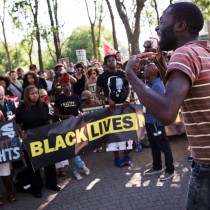




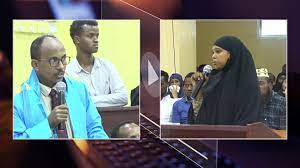

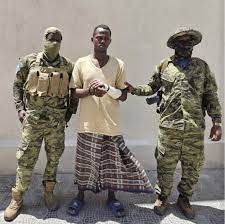


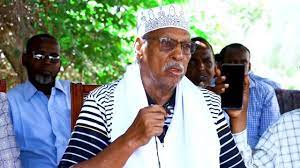
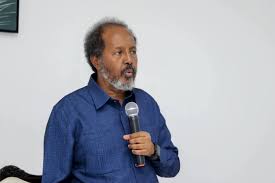

How many black men have been killed by Toronto police? We can't know
Police civilian watchdog will not release data on the race of those killed by Toronto police — because it doesn't collect it. Neither does Stats Canada, the Office of the Independent Police Review Director or police themselves.